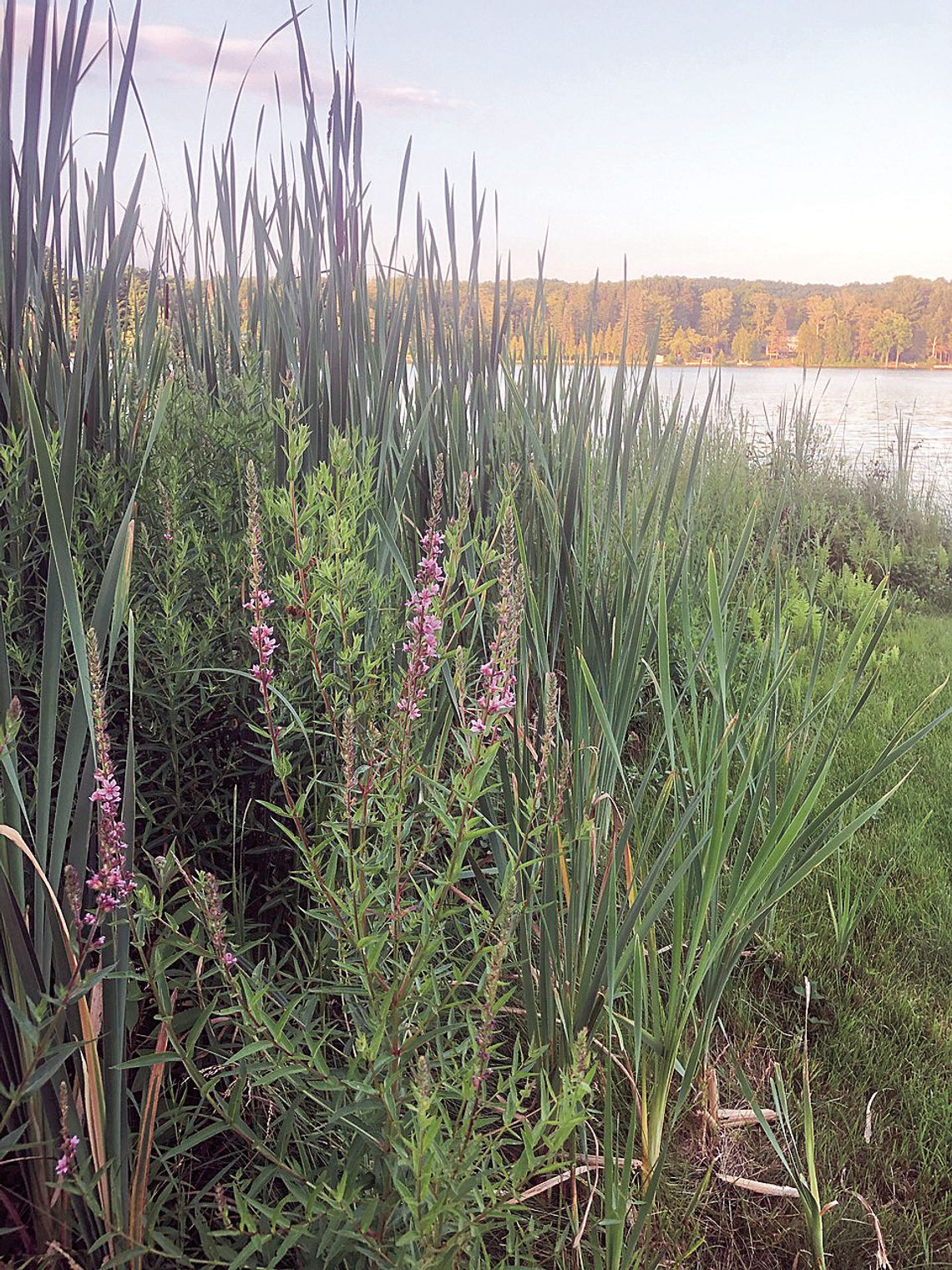Showy purple loosestrife is bearing its color, which makes this the perfect time for the two largest lake associations in the county to attack the pest.
The Lake Leelanau Lake Association is pinning part of its control approach to a beetle that’s a picky eater while the Glen Lake Association is resorting to hand-to-hand combat.
“We’ve been at war with purple loosestrife along with yellow iris,” said Rob Karner, watershed biologist for the Glen Lake Association. “Every year we have less and less.”
An independent contractor has been hired by the Glen Lake Association to dig up and destroy loosestrife, acting on tips left on the lake association website.
The Lake Leelanau Lake Association in the fall surveyed the lake, finding that 250 out of the lake’s 1,350 parcels were infected with loosestrife. It’s a wide- spread problem that requires a community approach to solve, according to Nancy Popa, president of the LLLA board of directors.
She’s asking riparians to inspect their properties in search of loosestrife, which is coming into bloom a couple weeks earlier than most years. Its flowers are a vivid purple arranged at the top of the stem in pairs or whorls. According to the LLLA website, loosestrife can “grow 4-10 feet tall, and its flowers can produce over two million sides the size of ground pepper, making it highly capable of spreading.”
The LLLA is hoping to curb the growth of large infestations by releasing a beetle that feeds exclusively on loosestrife. The Tip of the Mitt Watershed Council based in Petoskey purchased 70 pots of beetles for distribution in northwest Michigan; the LLLA, aggressive in its approach, bought 29 of the lot at a cost of $150 each.
“The beetles are effective in areas where there are a lot of plants. Those bigger investigations where it would be impossible to dig them all up is where beetles work best. That’s also where it’s harder to do anything differently,” Popa said.
In Lake Leelanau, loosestrife is most prevalent in the northern part of south Lake Leelanau, the Narrows, and parts of the Leland River.
The predator technique has a history of success, albeit on a smaller scale. The Leelanau Conservancy continues to release pest-fighting beetles within its Narrows Natural Area.
“It was two to three weeks ago that we released them,” recounted Emily Douglas, land steward for the Conservancy. “We’ve been releasing them for many years, and we see they are still there and eating the loosestrife. They make the plant leaves look like Swiss cheese. They really do a good job.”
Over the past couple of weeks the beetles have been released up and down the lake after permission was granted from landowners.
Leaving loosestrife to its own ways can smother out native plants, creating a monoculture disruptive to other species. The plant has been around awhile, having been brought to America in 1833 for medicinal purposes.
The association is asking riparians that find less than 10 purple loosestrife plants to “dig them up and dispose of them in their garbage.” If digging is problematic, “we” are asking the property owner to consider using an herbicide to kill the plant only if there is no standing water surrounding the plant.” A certified pesticide applicator should be used in areas of standing water.
For properties that have more than 10 plants with standing water, the LLLA asks landowners to hire a commercial business pesticide applicator for eradication.
The LLLA contacted the owners of property that contained loosestrife identified in the fall survey. Popa said the LLLA is taking the lead role in controlling loosestrife this year, with plans to begin eradication of phragmites band yellow flag iris in 2025.
“It’s what a lake association does, help to educate people and help people be good stewards of their own land,” she said. Not all Lake Leelanau riparians belong to the association.








